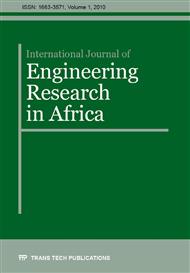p.1
p.11
p.17
p.29
p.39
p.47
p.57
p.67
Implementing OHSAS 18001:2007: - A Case Study of Hazard Analysis from the Printing Industry
Abstract:
All organizations, regardless of their size or complexity are faced with the challenge of implementing an Occupational Health and Safety (OH&S) management system that will prevent injuries and ill health to persons that are working under the control of the organization. The purpose of this paper is to show how organizations can improve their health and safety performance through the effective implementation of existing statutory requirements and regulations. Using a case study from a Printing Industry organization, the key requirements needed to implement a H&S programme and focus on the concept of hazard identification, risk assessment and risk control were investigated. The organization is a large company, which has implemented a system to the requirements of the Occupational Health and Safety Act: 2005. Findings reveal that there is a lack of control procedures to ensure compliance to legal requirements. The Health and Safety Policy needs to be reviewed. Significant hazards need to be prioritized. The company does not regularly conduct risk assessments. Employees need more training on H&S issues. Use of hazardous substances must be properly controlled. Appropriate H&S objectives and targets have to be set and regularly monitored. Internal auditing, which has up to now been limited to their ISO 9000:2008 certification, should be extended to the OH&S Management systems. To enable a better control of the situation, it is recommended that OHSAS 18001:2007 should be implemented, including the concept of continual improvement, to assist in more effective control of the Occupational Health and Safety regulations.
Info:
Periodical:
Pages:
17-27
Citation:
Online since:
February 2010
Authors:
Price:
Сopyright:
© 2010 Trans Tech Publications Ltd. All Rights Reserved
Share:
Citation:


